This post may contain affiliate links. Read our privacy policy.
Sfogliatella, a traditional baked pastry from the Italian region of Naples, is a beloved delicacy. It features thin layers of rolled-out pastry dough, creating an authentic and irresistibly flaky texture.
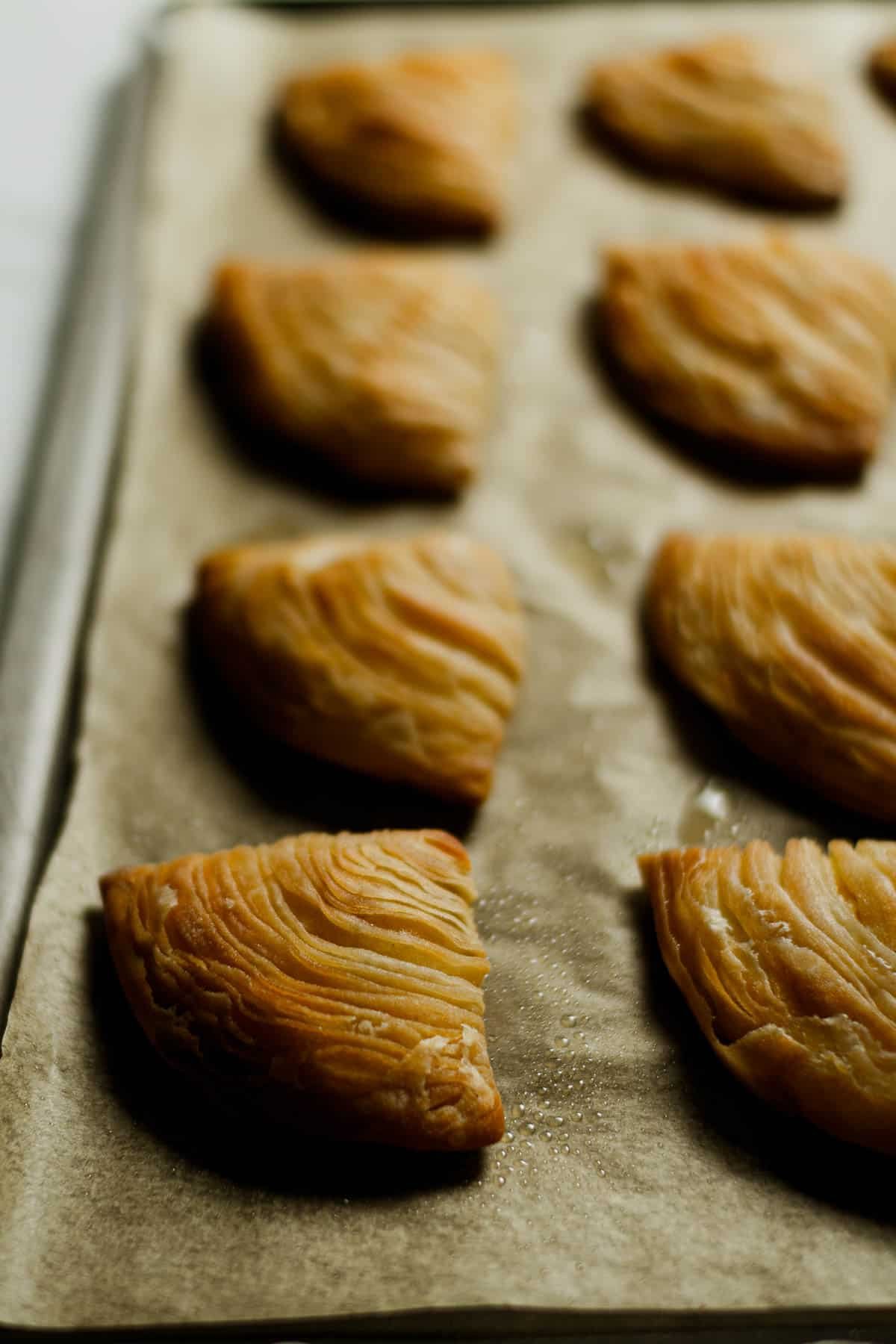
Jump to:
Recipe Videos
What is Sforiatella
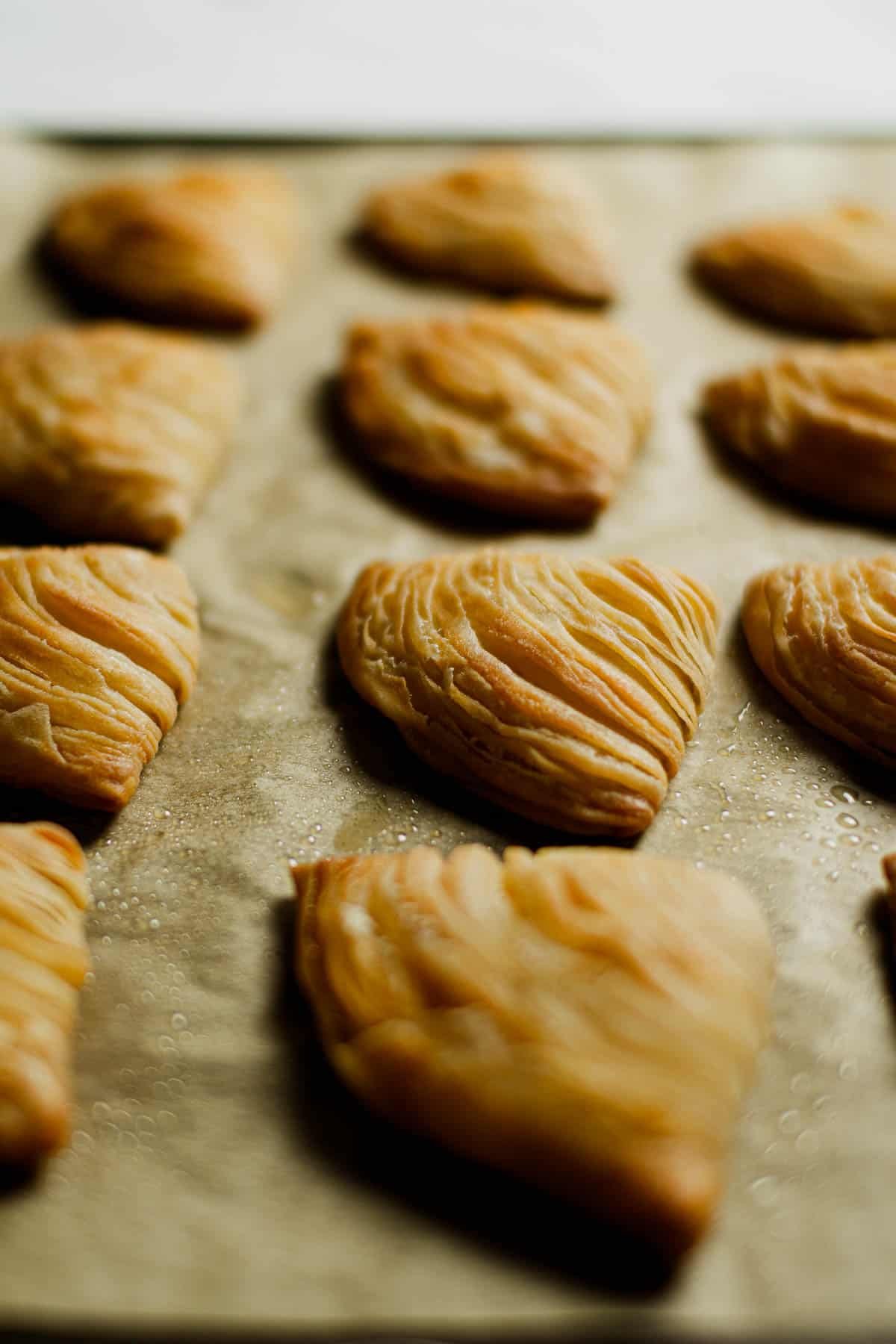
Sfogliatella is a traditional sweet pastry that originated in Naples, Italy. The name translates to 'many layers' in Italian, referring to its characteristic flaky pastry layers that encase the creamy filling.
In the past, it was challenging to find outside of Naples, but recently it has gained popularity throughout Italy and can now be found across the country.
History of Sfogliatella

Sfogliatella is said to have originated in the 17th century at the Santa Rosa Monastery on the Amalfi Coast. It is believed that one of the nuns came up with the idea of not wasting the remaining semolina flour soaked in milk and decided to create a cream by adding ricotta, dried fruits, and lemon liqueur (nowadays known as limoncello) to it.
The dough, made with lard and white wine, was shaped like the nun's headgear, and the cream filling was stuffed inside, marking the beginning of this pastry. At that time, the pastry was named Santa Rosa after the monastery and was topped with sour cherries and cream.
It was in the early 1800s, about 200 years later, that Sfogliatella took on its current name and shape. Pasquale Pintauro, inspired by this pastry, introduced a modified version in the center of Naples, on Toledo Street. He made the dough even thinner and changed the shape to resemble a seashell, excluding the cherry and cream toppings.
This marks the beginning of the modern Sfogliatella, and the name changed from Santa Rosa to Sfogliatella (Sfogliatella for singular, Sfogliatelle for plural).
By the way, the Pintauro pastry shop still exists in Naples (Via Toledo, 275, 80132 Napoli).
(There is a column on the origins of Sfogliatella on the website of Gambrinus, a historic café in Naples founded in 1860. Gambrinus is famous for the concept of 'Caffè Sospeso,' where one pays for two cups of coffee, consuming one and leaving the other for someone who cannot afford to pay for their own coffee.)
How to Make Layers of Pastry Dough
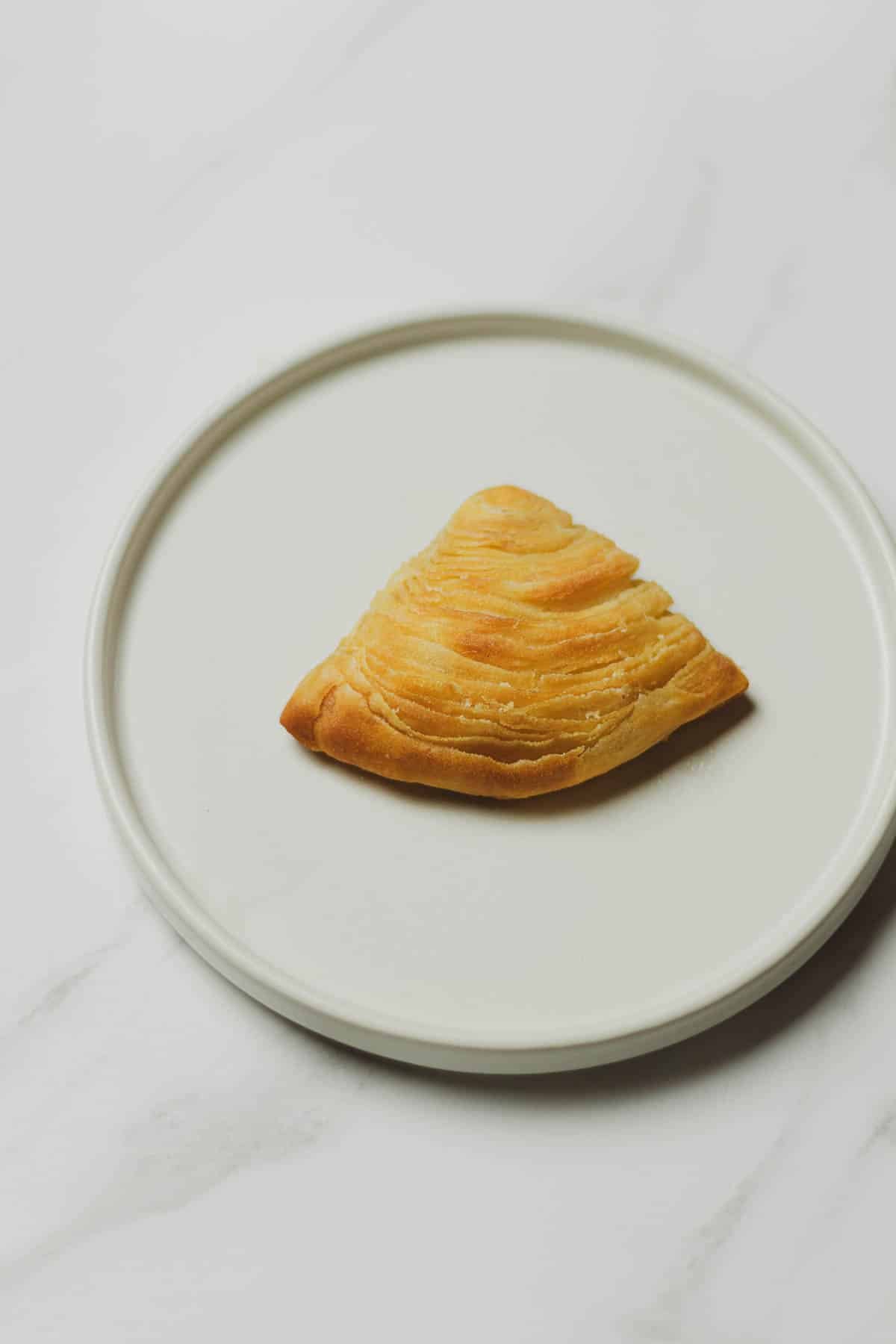
The dough for sfogliatella is made by layering thinly rolled dough with lard. When the dough is heated, the lard melts, causing the layers to puff up. The layers of lard create hollow spaces as the moisture evaporates, leaving behind the crispy layers of dough.
In a previous recipe for Portuguese egg tarts, we used a similar method of rolling out and folding the dough.
I had always thought that folding butter into the dough, as done in puff pastry, was the traditional way since it is commonly used today. However, the first pastry dough resembling what we know as puff pastry was created in France in the 17th century, and it was not until the 19th century that Antonin Carême established the technique we use for puff pastry today. This coincides with the time when sfogliatella was being developed.
Therefore, whether it is rolling out the dough or creating layered puff pastry, both methods seem to have been developed around the same period. Thus, the technique of rolling out the dough thinly may not be an older method, but rather a lesser-known approach due to the global spread of French pastries.
Sfogliatella Lard or butter for the dough
Nowadays, most people use butter when making pastries. In Italy, however, lard has been used since Roman times, and is frequently found in recipes for traditional pastries and local dishes.
However, in this recipe, you can substitute butter for lard. Using butter will result in a flaky texture, while using lard will create a crispy texture. Since sfogliatella is known for its crispy texture, I recommend using lard if you can find it. It will yield a texture that closely resembles the authentic sfogliatella.
Ingredients
Sfogliatella Dough
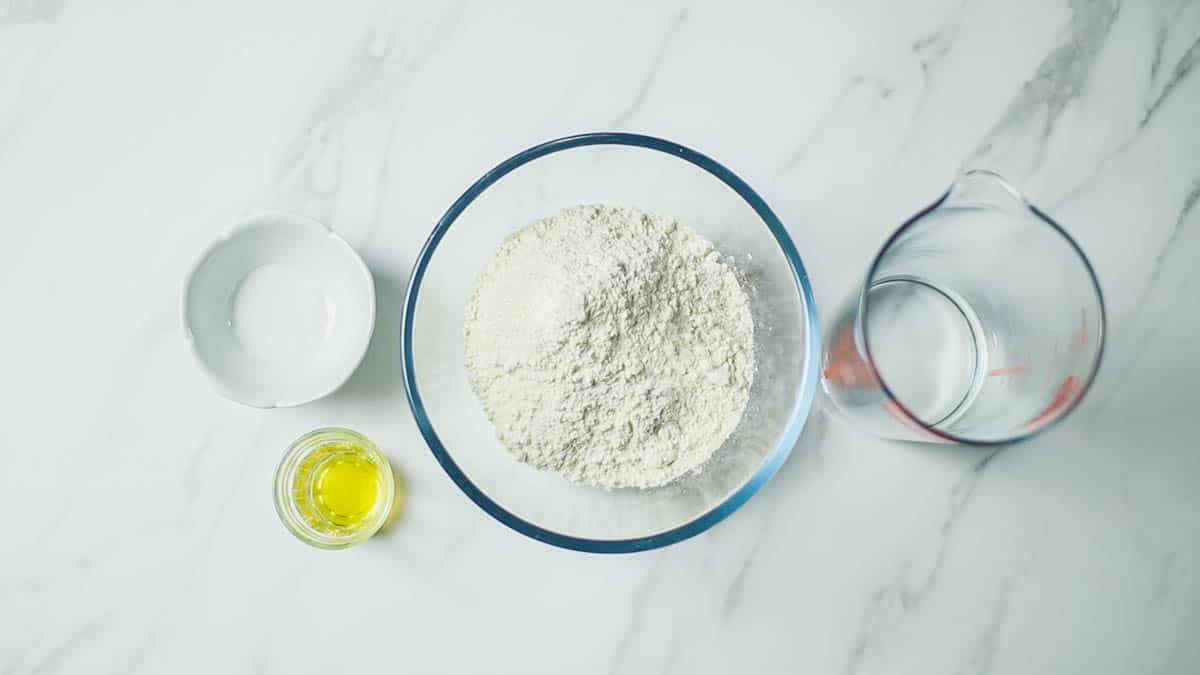
- Bread Flour - Choose a flour with a high gluten content, such as those used to make bread, since the dough will be rolled out fairly thin.
- Salt
- Honey - Adding honey to the mixture gives a beautiful brown color, so I recommend adding a small amount even if it's just a little.
- Water
Filling
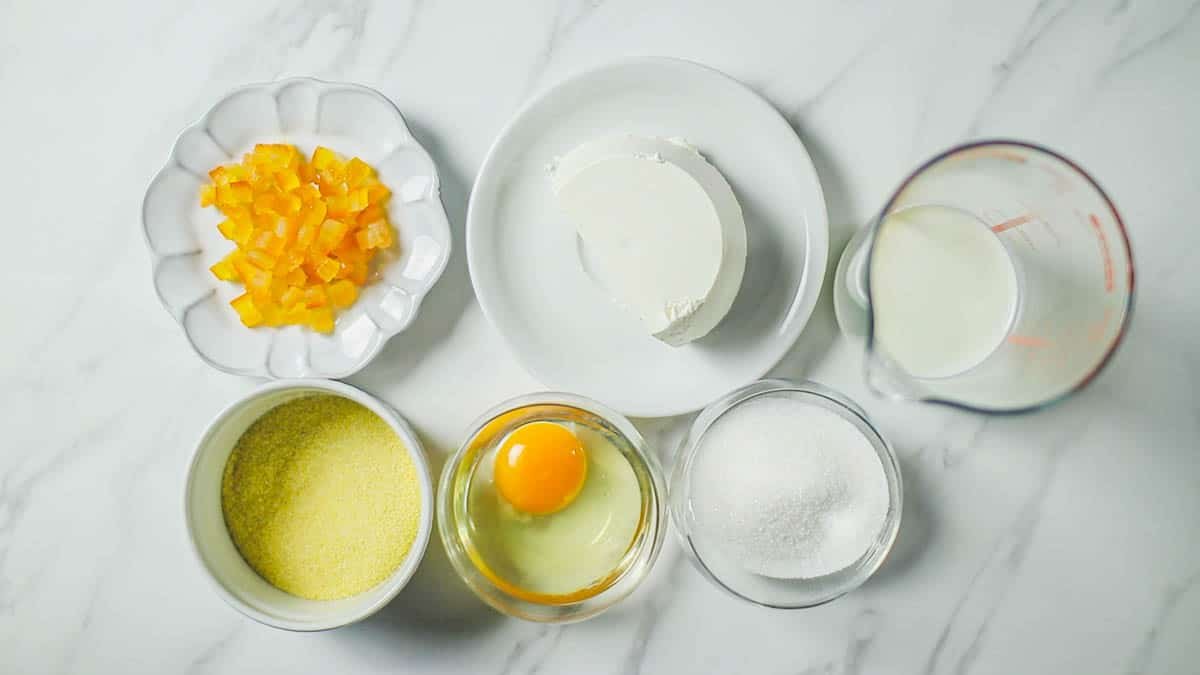
- Milk
- Semolina Flour - Semolina flour, which is used as a base for pasta and also in couscous, has a characteristic texture.
- Ricotta cheese - You can use store-bought ricotta cheese, but it can also be easily made from milk.
- Granulated sugar
- Egg
- Orange peel - If you can't find orange peel, lemon peel can be used as a substitute.
Assembly
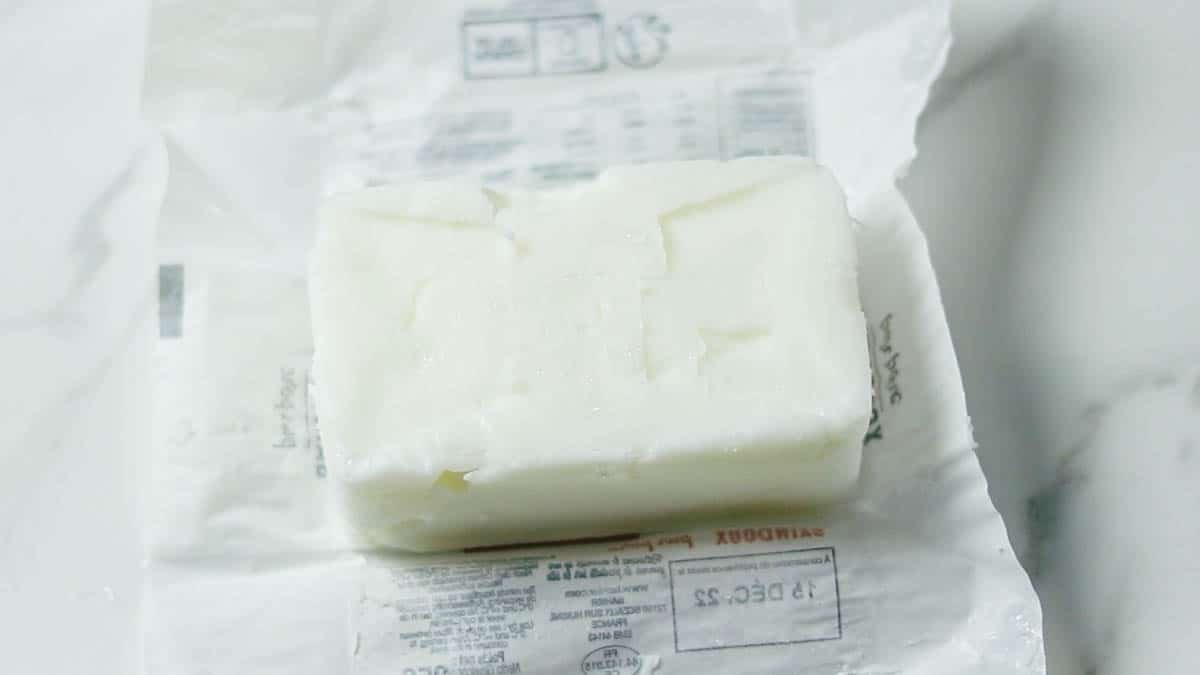
- Lard - Lard is made by rendering and solidifying the fat from pork. It can be categorized into "pure lard," which is made solely from refined pork fat, and "blended lard," which is made by mixing refined pork fat with other fats or oils. It is recommended to choose lard labeled as "pure lard" for the best quality.
Instructions
Preparations
- Cut the orange peel into cubes
- Allow lard (or butter) to come to room temperature and soften before using.
- Line a baking sheet with parchment paper.
- Preheat oven to 200°C (400°F) before use.
Sfogliatella Dough
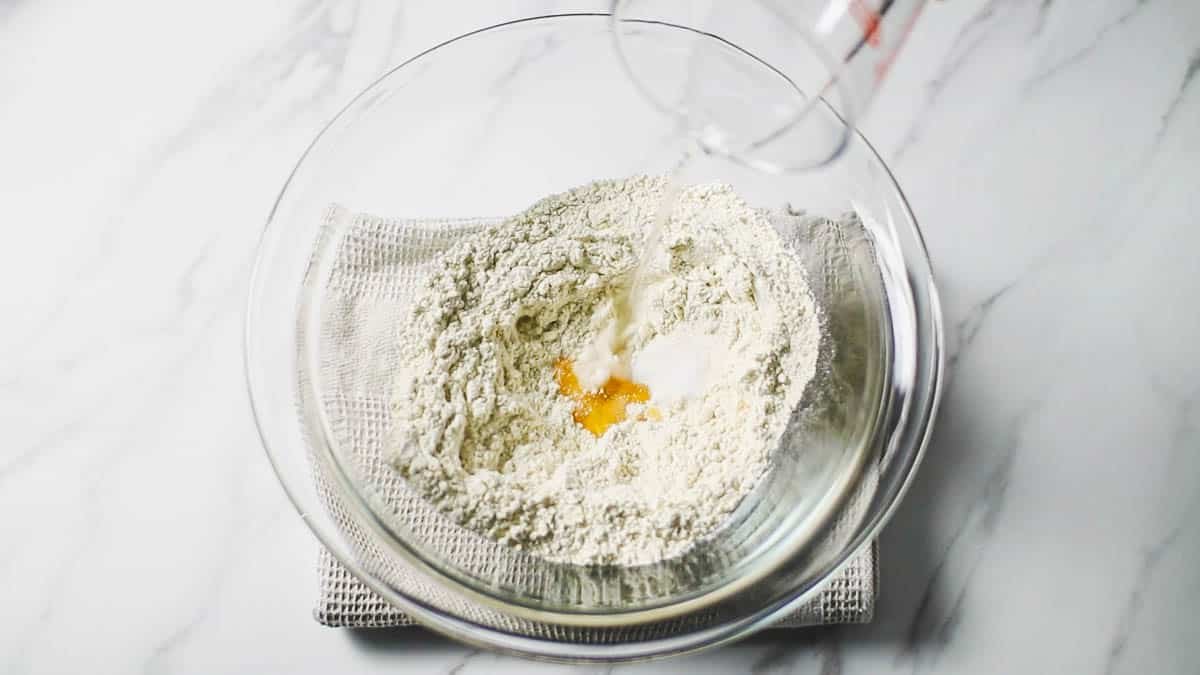
Place the flour, salt, and honey in a bowl. Make a hollow in the center of the bowl and pour in the water a little at a time, mixing until combined.
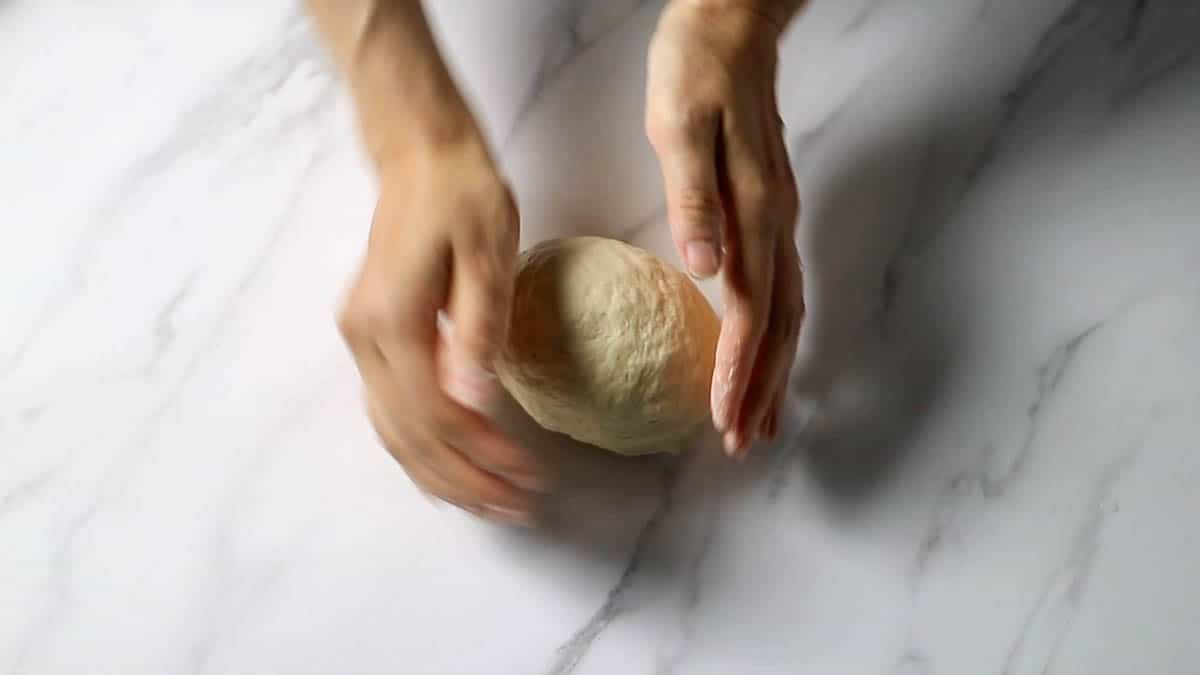
Once the flour has absorbed all the water and formed a cohesive dough, remove it from the bowl and knead it on a lightly floured surface until smooth. Wrap the dough in plastic wrap and let it rest in the refrigerator for at least 1 hour (preferably overnight).
Filling

Heat the milk in a saucepan over heat and add the semolina flour. Continue stirring until the semolina flour absorbs the moisture from the milk and becomes creamy, about 1 minute.

Remove from heat and add ricotta and granulated sugar. Add the eggs and orange peel.
Roll out dough
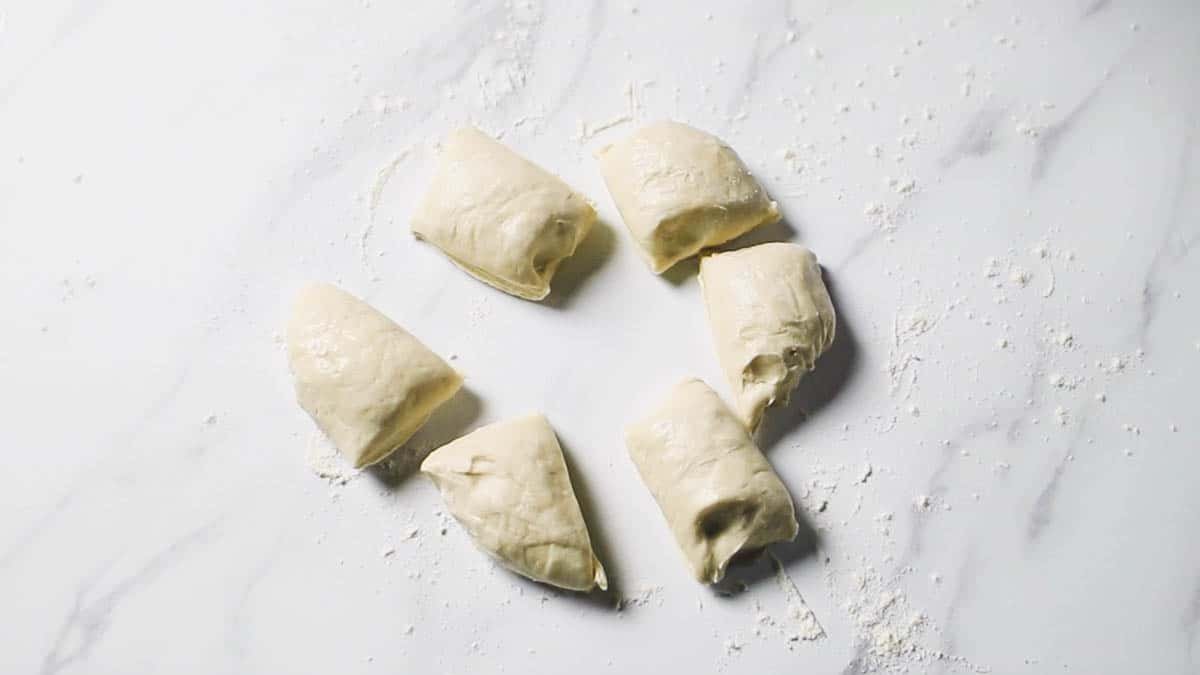
Divide the dough into 6 equal portions.
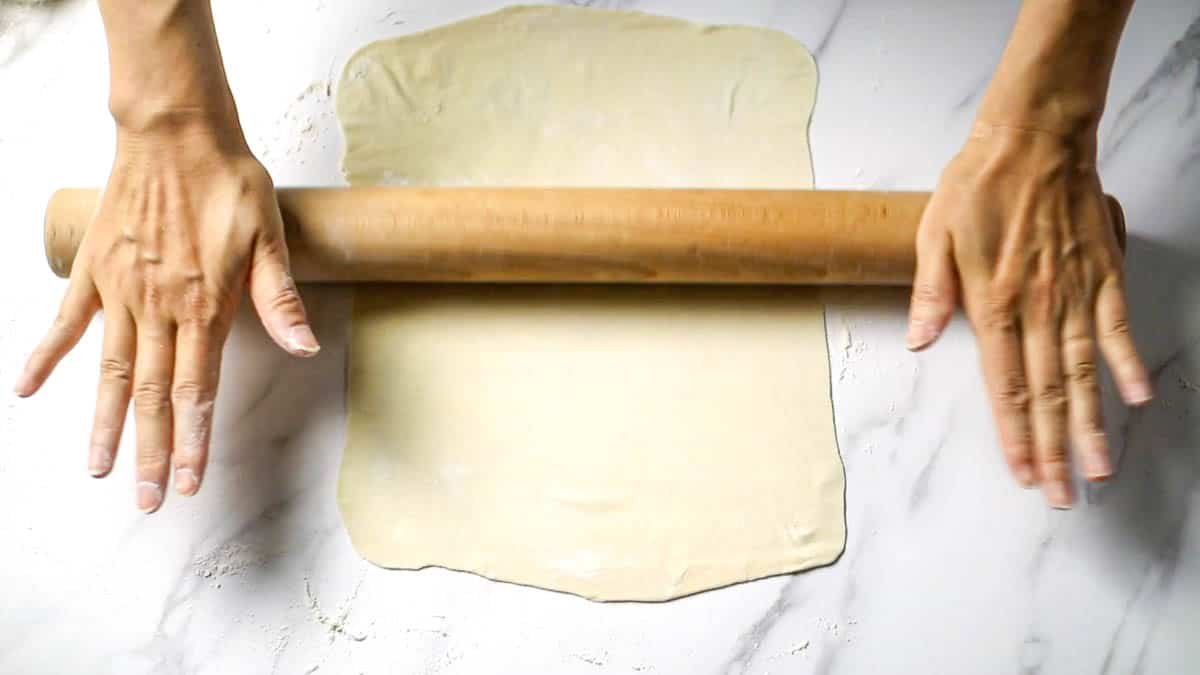
Place one of the divided dough portions on the floured surface and lightly shape it into a ball with your hands. Then, using a rolling pin, roll it out into a rectangular shape measuring approximately 35cm in length and 25cm in width (14" x 10"). Roll the dough out thinly, almost like a paper.
The key is to spread the dough thinly. If the dough becomes too thick, it will not be as smooth as it should be If you have a pasta machine, it is convenient to use it.
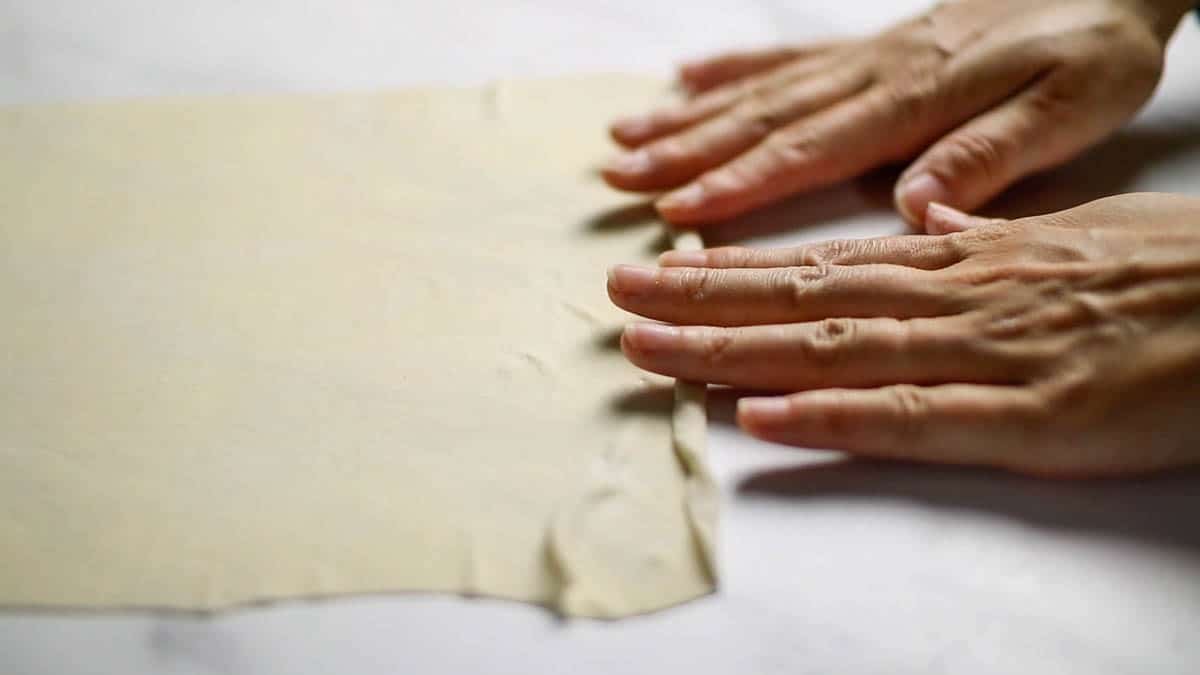
Place the dough lengthwise and roll up the front part slightly, about 1-2 cm (0.4-0.8 inches).
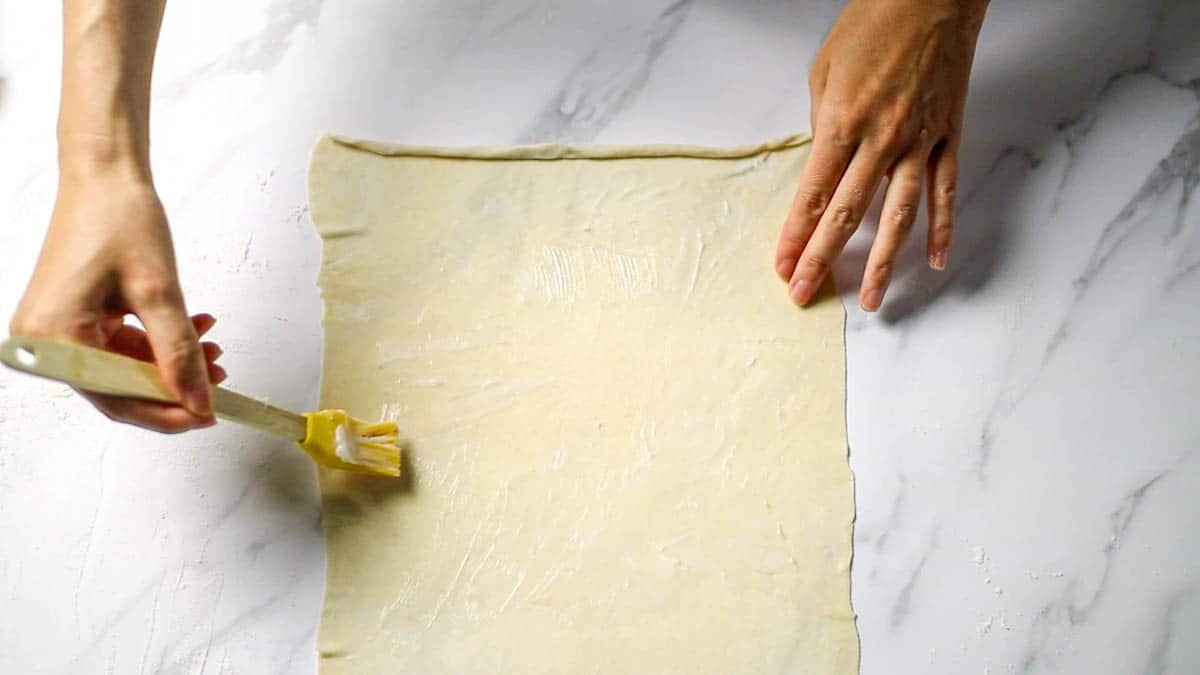
Using a brush, apply a thin layer of lard to the entire top of the rolled portion of the dough.
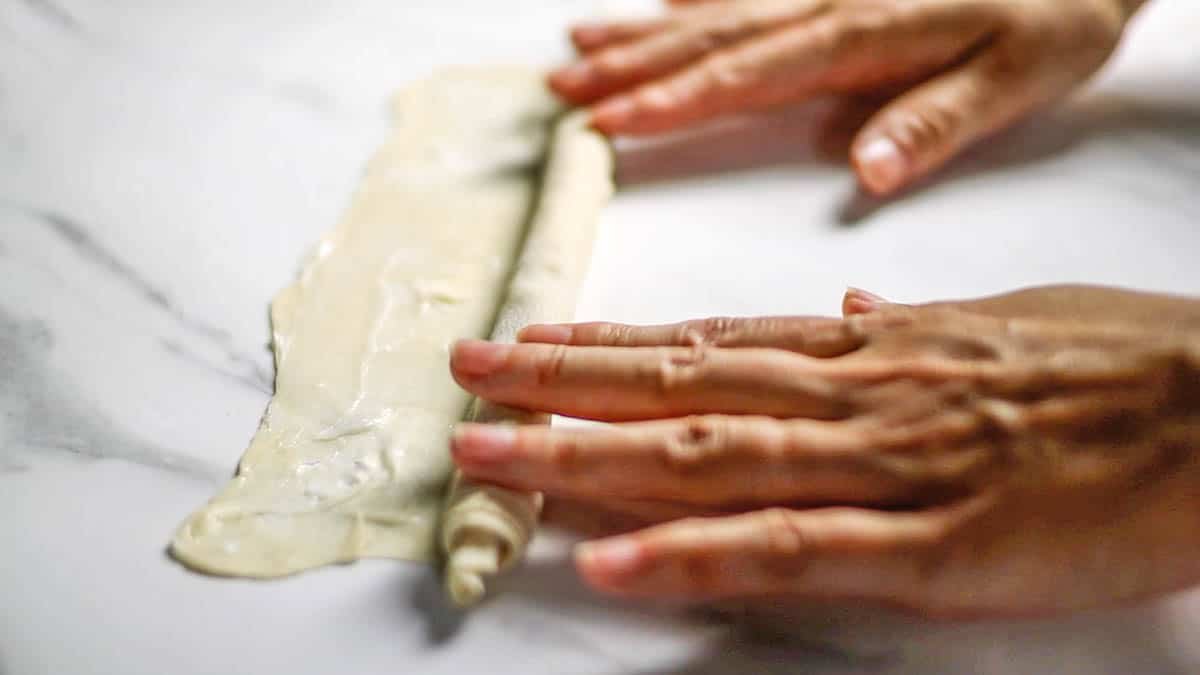
Start curling from the front and leave a little at the end of the curl.
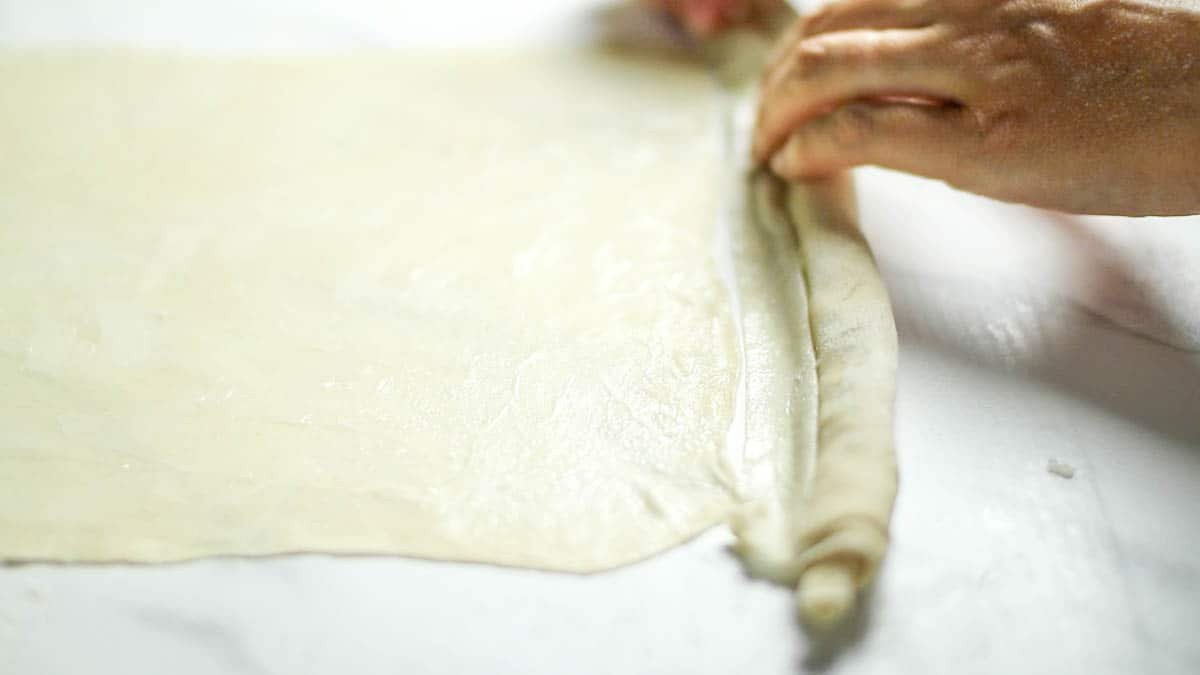
Roll out the another dough with a rolling pin and spread a thin layer of lard over the entire dough. Connect the dough to the end of the roll.
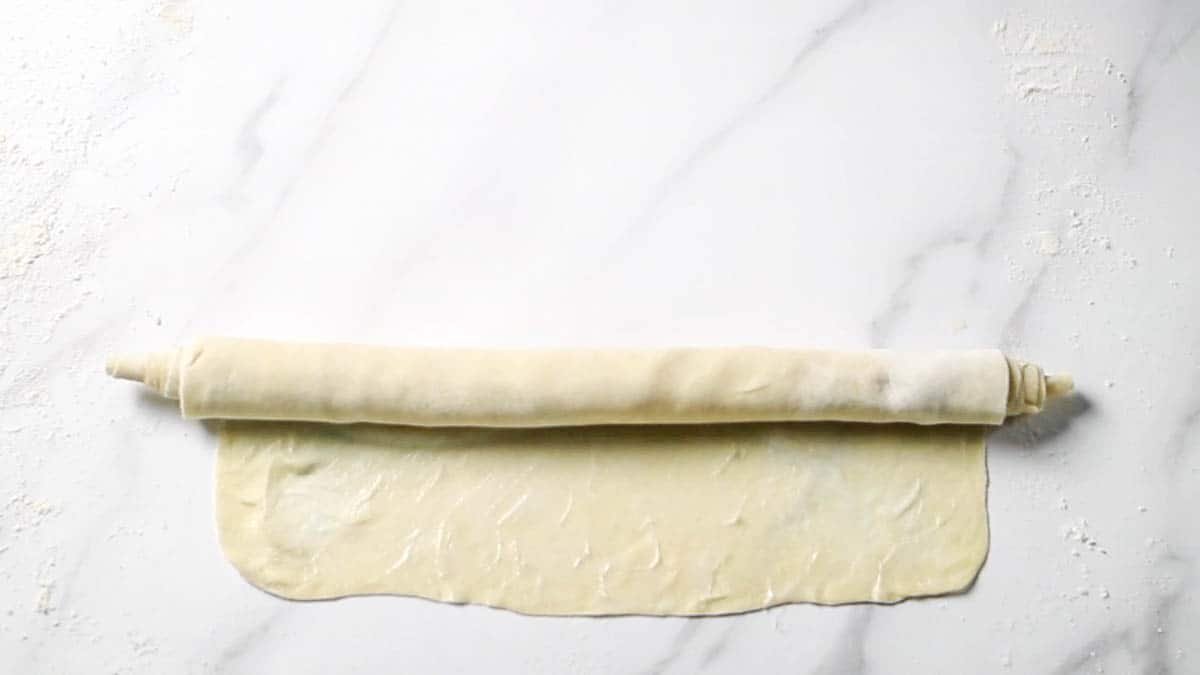
Roll the combined dough into a tight spiral, starting from one end. Leave a small portion at the end without completely rolling it to connect it with the next portion of dough.
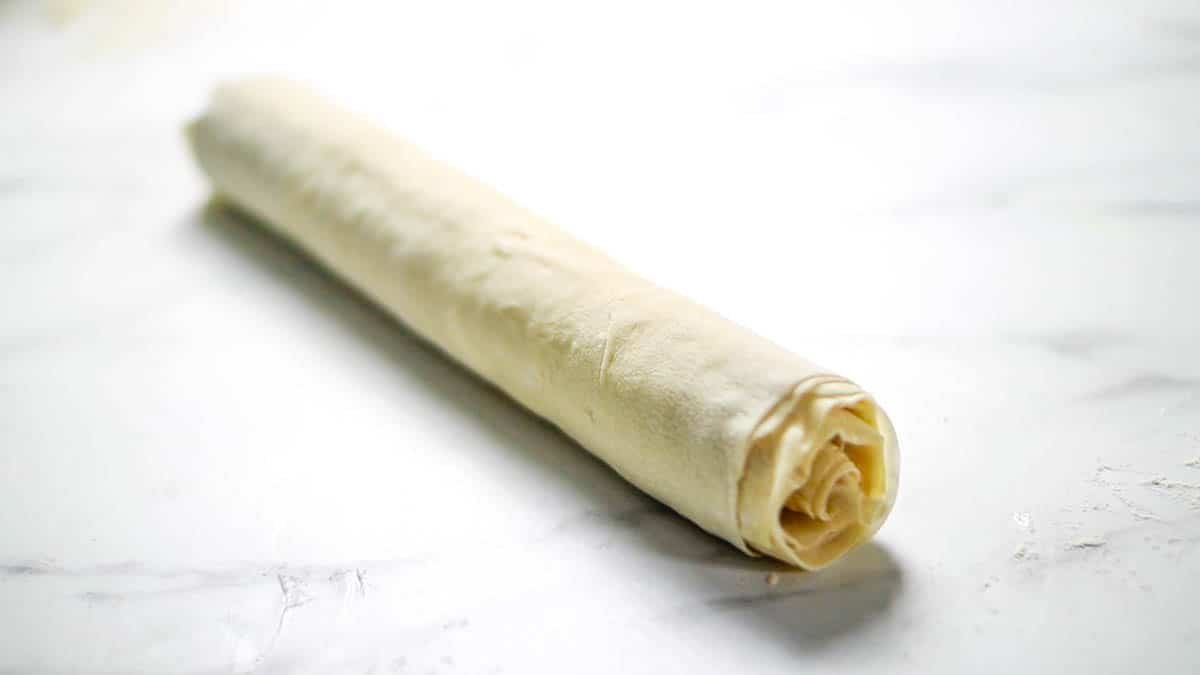
Repeat the same process with the remaining portions of dough until you have a single rolled dough. Wrap it in plastic wrap and let it rest in the refrigerator for at least 1 hour.
Fill with cream and bake
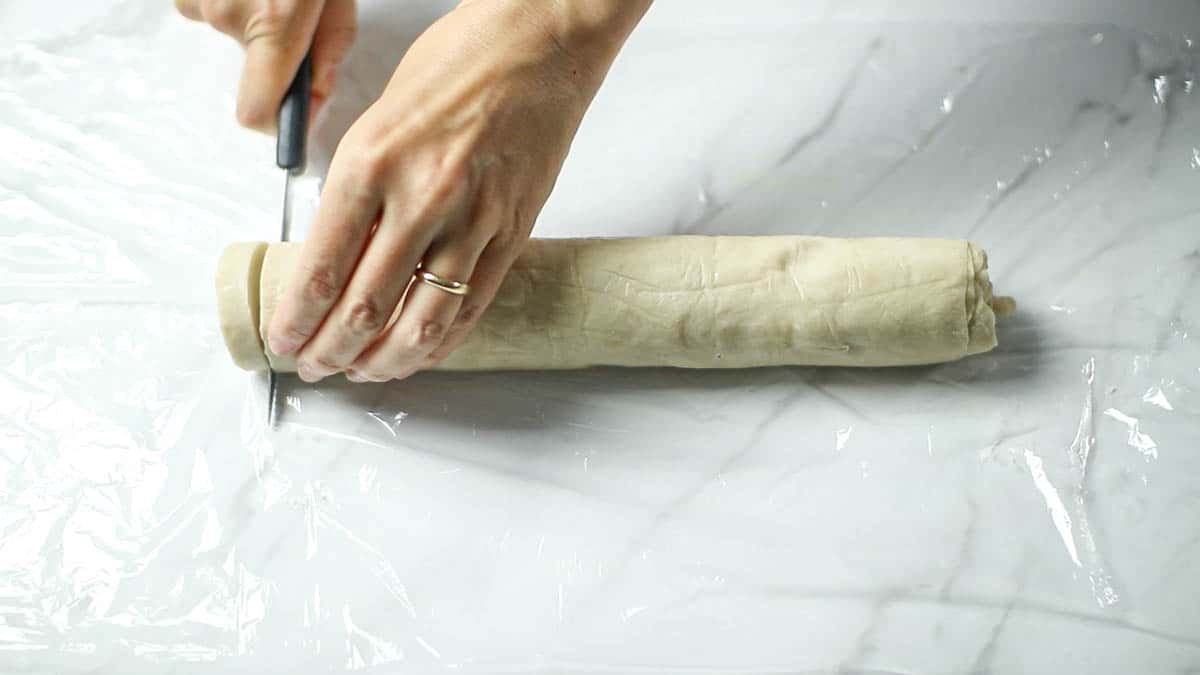
Cut off the sides of the dough and cut it into 1 cm (0.4 inches) thick.
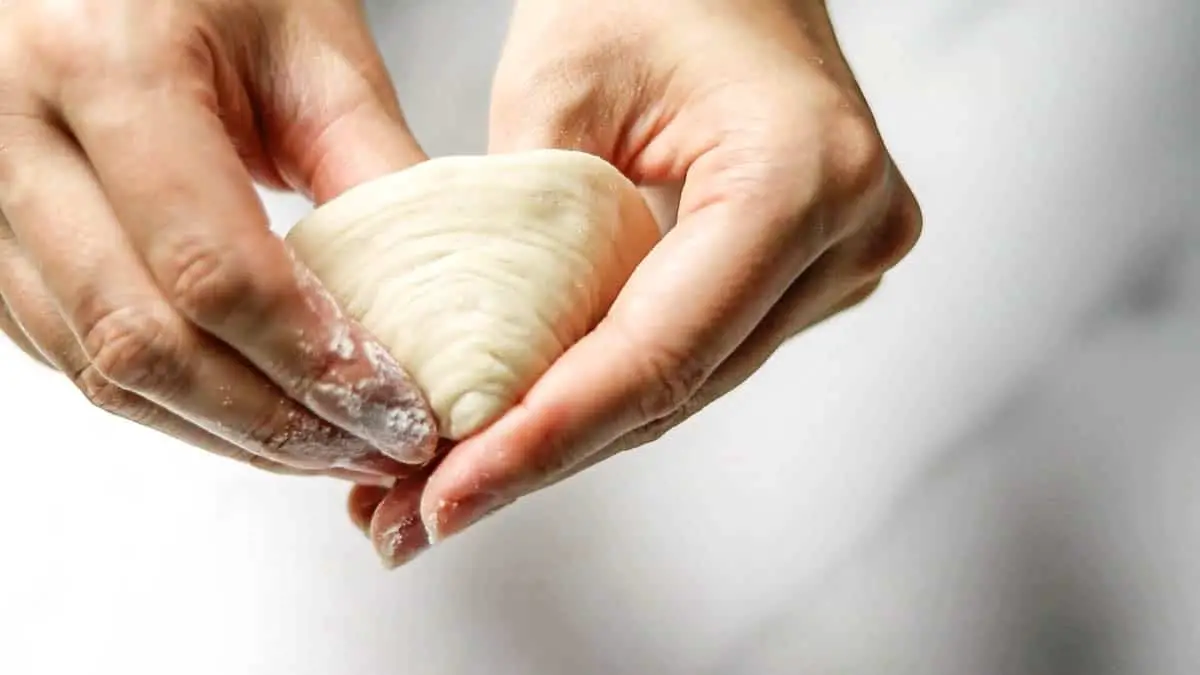
First, lightly flatten the dough with a rolling pin. Then, using your fingers, gently push and stretch the center of the dough in a slow, swirling motion to create a shell-like shape.
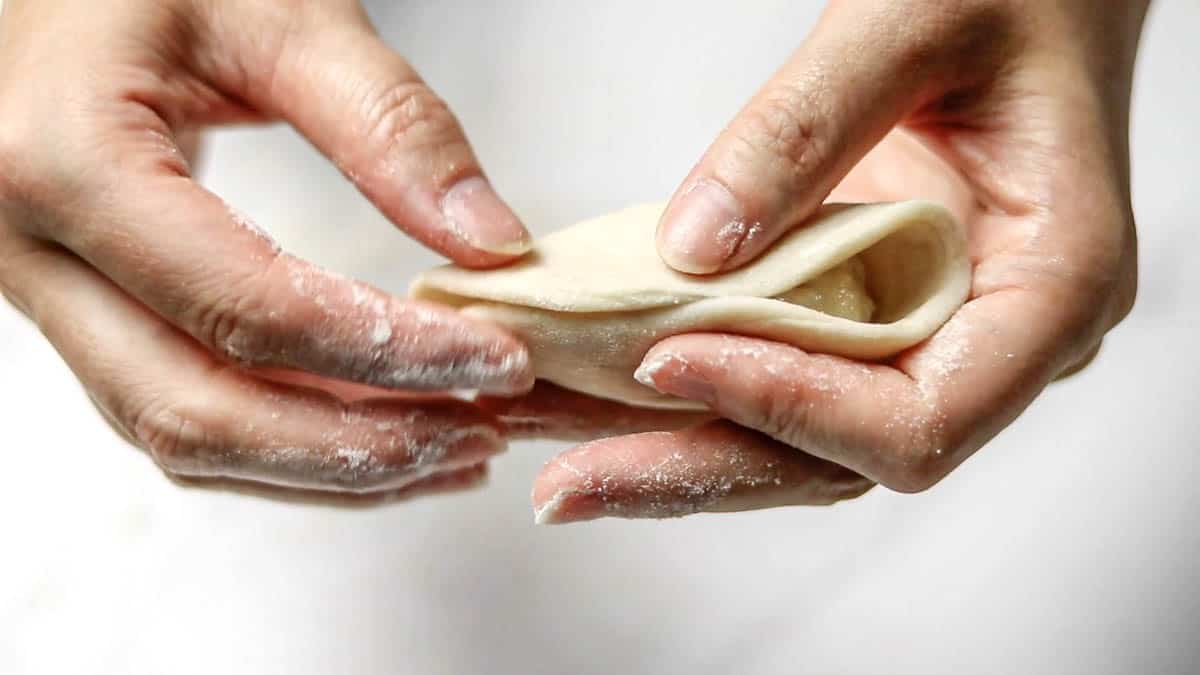
Fill the center with the cream and seal the outer edges of the dough together. Place the filled pastries onto a baking sheet lined with parchment paper.
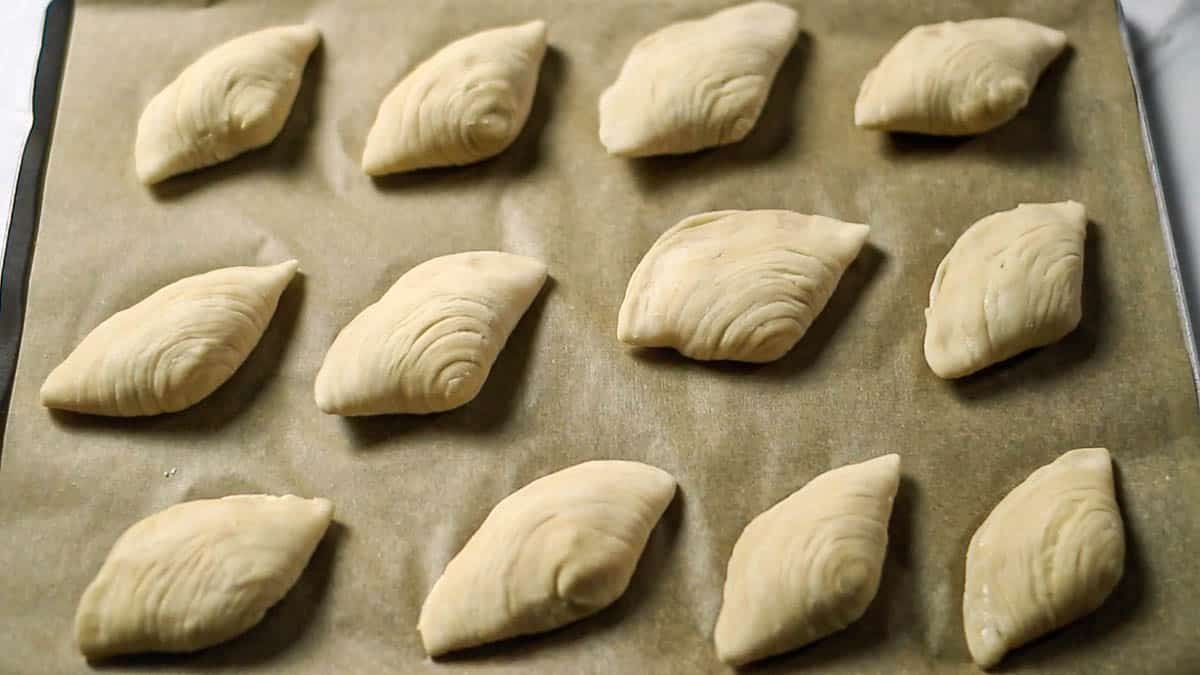
Bake in a preheated 200°C(400°F) oven for 25 minutes.
Storage
You can store them in a food container at room temperature for about 2 days.
Equipment
If you have a pasta machine, it is highly recommended to use it for rolling out the dough in this recipe. In Italy, they even use pasta machines to roll out tart dough by sandwiching it between parchment paper. The pasta machine is very convenient because it can evenly and beautifully stretch the dough even when it's cold.
That being said, I have a pasta machine at home as well, but I haven't used it for over a year since I moved. I found it too bothersome to assemble and ended up not using it this time either. If you're considering purchasing one, I advise carefully considering how frequently you will use it before making a decision...

When rolling out the dough with a rolling pin, it is recommended to choose a longer and heavier one if possible, as it allows you to stretch the dough evenly without applying too much effort.

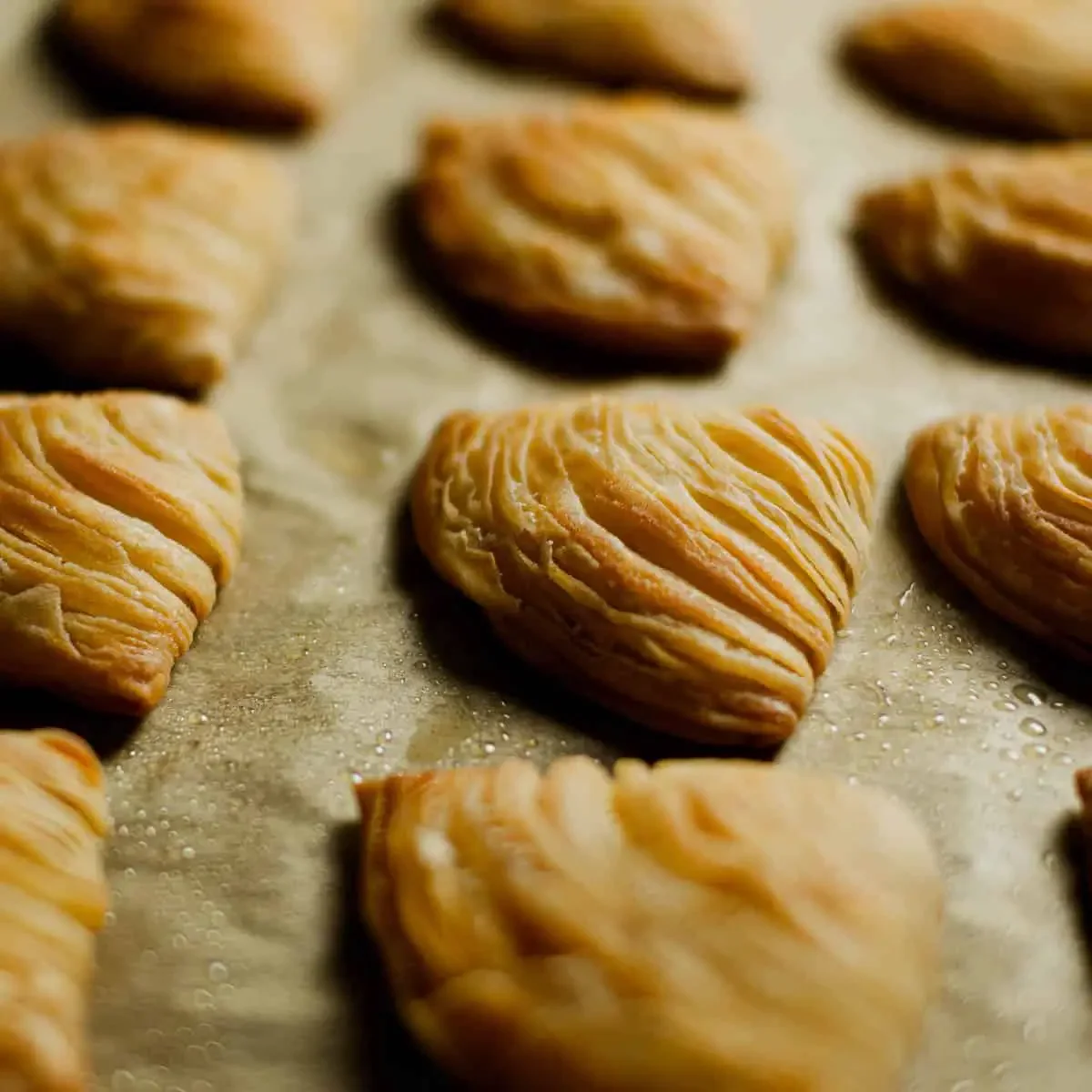
Sfogliatella Recipe : Traditional Pastry from Naples, Italy
- Total Time: 1 hour 25 minutes
- Yield: 16 servings
Description
Sfogliatella, a traditional baked pastry from the Italian region of Naples, is a beloved delicacy. It features thin layers of rolled-out pastry dough, creating an authentic and irresistibly flaky texture.
Ingredients
Sfogliatella Dough
- 200 g Bread flour
- 4g salt
- 80ml water
- 1 teaspoon (7g) honey
cream
- 100ml milk
- 40g semolina flour
- 150g ricotta cheese
- 50g granulated sugar
- 1 egg
- 50 g orange peel
Assembly
- 100 g lard (or unsalted butter)
Instructions
Preparations
- Cut the orange peel into cubes
- Allow lard (or butter) to come to room temperature and soften before using.
- Line a baking sheet with parchment paper.
- Preheat oven to 200°C (400°F) before use.
Sfogliatella Dough
- Place the flour, salt, and honey in a bowl. Make a hollow in the center of the bowl and pour in the water a little at a time, mixing until combined.
- Once the flour has absorbed all the water and formed a cohesive dough, remove it from the bowl and knead it on a lightly floured surface until smooth.
- Wrap the dough in plastic wrap and let it rest in the refrigerator for at least 1 hour (preferably overnight).
Filling
- Heat the milk in a saucepan over heat and add the semolina flour. Continue stirring until the semolina flour absorbs the moisture from the milk and becomes creamy, about 1 minute.
- Remove from heat and add ricotta and granulated sugar. Add the eggs and orange peel.
Roll out dough
- Divide the dough into 6 equal portions.
- Place one of the divided dough portions on the floured surface and lightly shape it into a ball with your hands. Then, using a rolling pin, roll it out into a rectangular shape measuring approximately 35cm in length and 25cm in width (14" x 10"). Roll the dough out thinly, almost like a paper.
- Place the dough lengthwise and roll up the front part slightly, about 1-2 cm (0.4-0.8 inches).
- Using a brush, apply a thin layer of lard to the entire top of the rolled portion of the dough.
- Start curling from the front and leave a little at the end of the curl.
- Roll out the another dough with a rolling pin and spread a thin layer of lard over the entire dough. Connect the dough to the end of the roll.
- Roll the combined dough into a tight spiral, starting from one end. Leave a small portion at the end without completely rolling it to connect it with the next portion of dough.
- Repeat the same process with the remaining portions of dough until you have a single rolled dough. Wrap it in plastic wrap and let it rest in the refrigerator for at least 1 hour.
Fill with cream and bake
- Cut off the sides of the dough and cut it into 1 cm (0.4 inches) thick.
- First, lightly flatten the dough with a rolling pin. Then, using your fingers, gently push and stretch the center of the dough in a slow, swirling motion to create a shell-like shape.
- Fill the center with the cream and seal the outer edges of the dough together. Place the filled pastries onto a baking sheet lined with parchment paper.
- Bake in a preheated 200°C(400°F) oven for 25 minutes.
Notes
The key is to spread the dough thinly. If the dough becomes too thick, it will not be as smooth as it should be If you have a pasta machine, it is convenient to use it.
- Prep Time: 1 hours
- Additional Time: 0 hours
- Cook Time: 25 minutes
- Category: Baked Goods
- Cuisine: Italian
Nutrition
- Serving Size: 1
- Calories: 146
- Sugar: 4
- Sodium: 114
- Fat: 8
- Saturated Fat: 3
- Unsaturated Fat: 4
- Trans Fat: 0
- Carbohydrates: 16
- Fiber: 1
- Protein: 4
- Cholesterol: 21


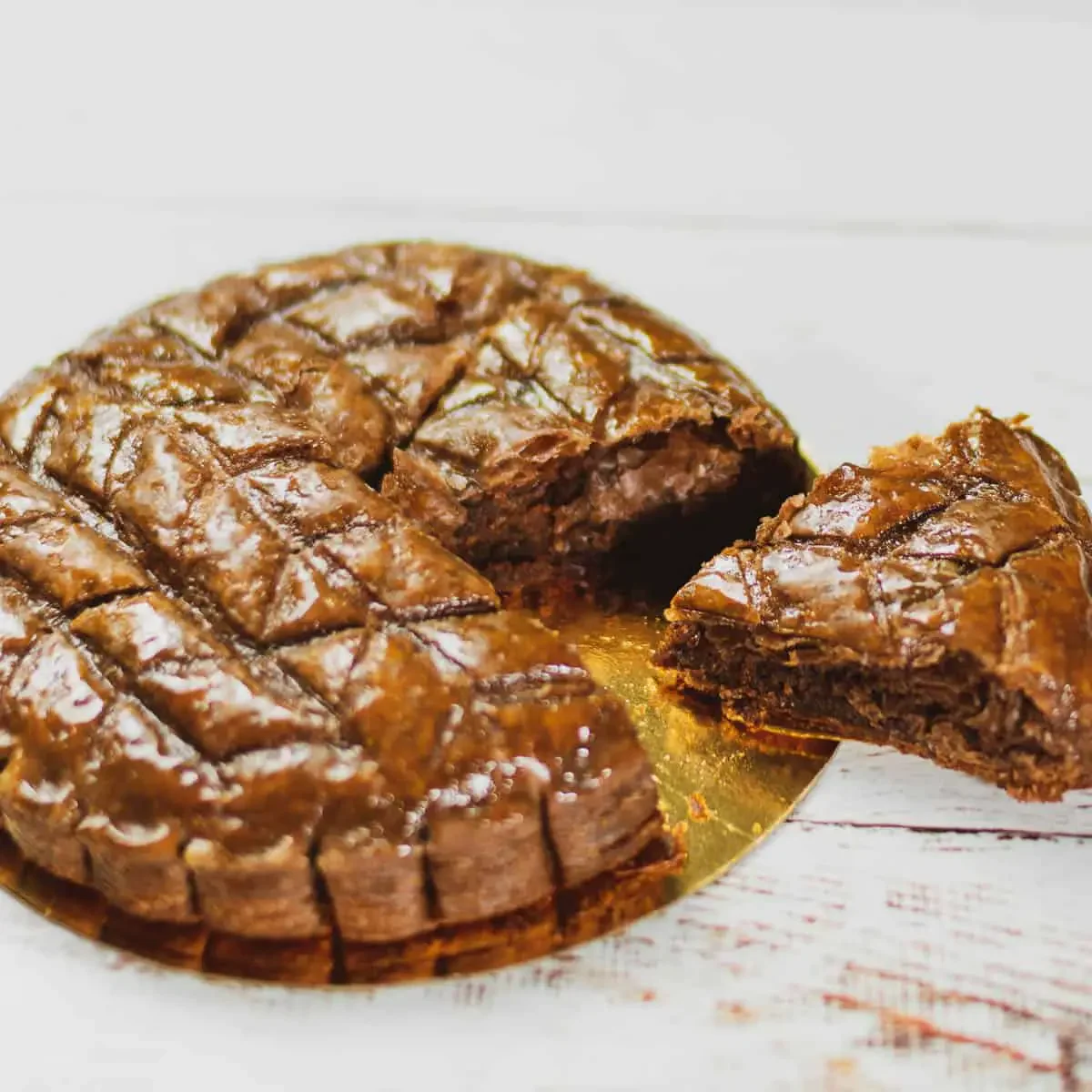


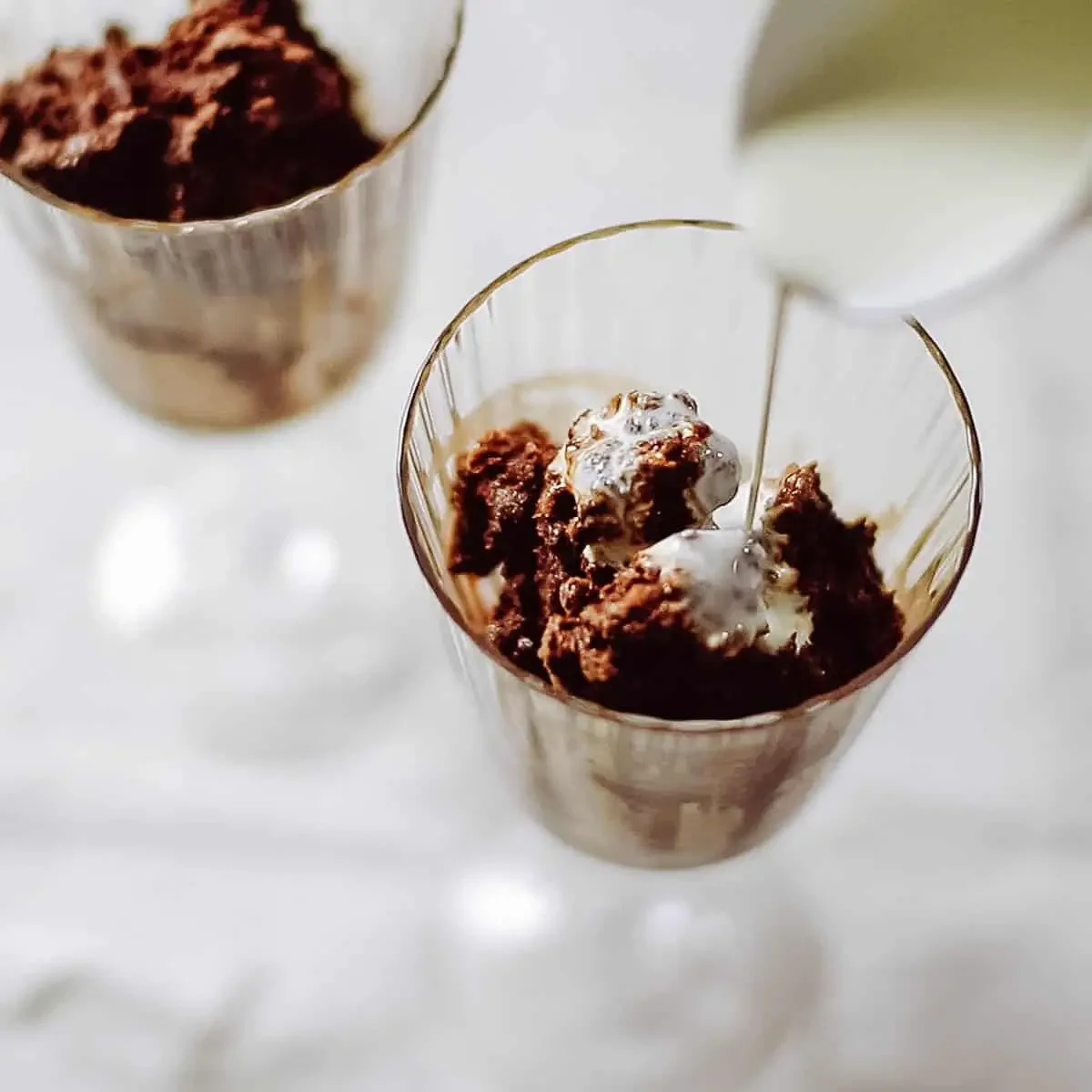
Leave a Reply